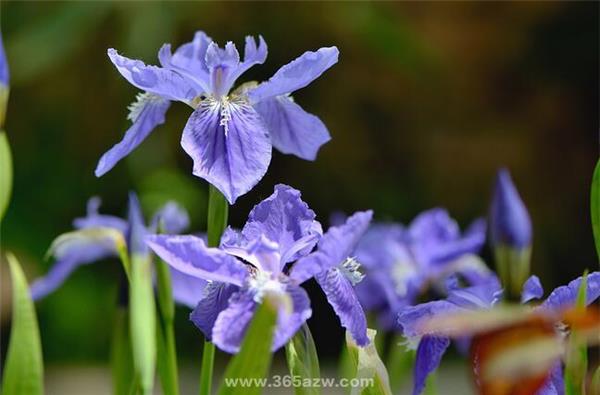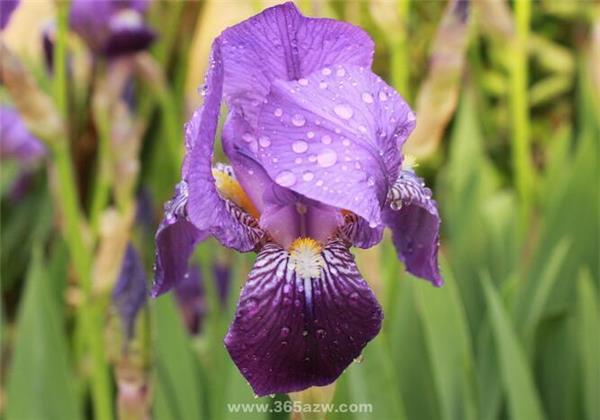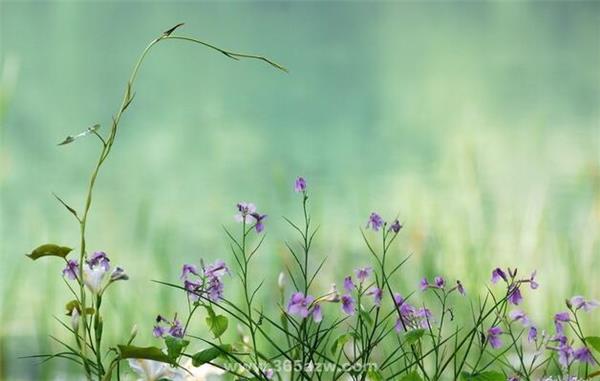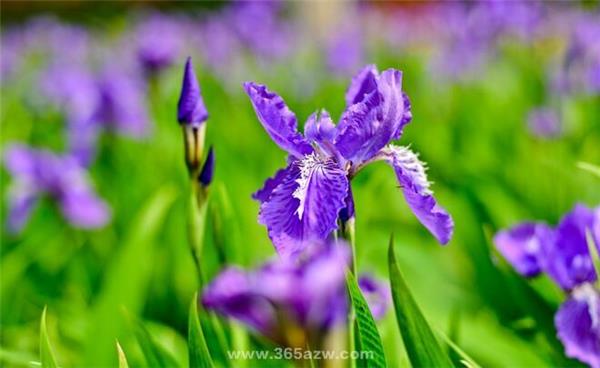Culture methods and maintenance techniques of Iris grass
Iris has huge petals and beautiful color, and breeding can play a certain decorative role indoors. Iris cultivation methods will be introduced in detail for you today.

Iris has a symbol of freedom and light, but also can extract flavors to make perfume, so many people plant irises at home. Iris, also known as Phalaenopsis, belongs to the Iris family. With beautiful flowers and delicious color, Iris is a good material for decorating gardens, communities and making flower blue.
Iris originated in Africa and Egypt, but now it has been bred all over the world because of its fame. It grows in cool, moist and light-rich environment, but its cold tolerance is poor, the lowest overwintering temperature is 4 ℃, and the suitable growth temperature is about 18 ℃. Plants such as garden farming are usually planted in greenhouses, sprouting in autumn, blooming in winter and spring, and dormant in summer, requiring fertile, moist and well-drained neutral sandy loam.
Morphological characteristics of Iris grass
Iris is a perennial herb with alternate leaves, 2 rows, sword-shaped, long 30~45cm and about 2cm wide.
The flowers of Iris are bluish purple, with 3 flowers arranged in a raceme, with a floral bud at the base of the stalk, 4cm long; perianth segments 6 in 2 whorls, outer whorls 3 round, with chicken crown processes above, white or blue, inner whorls 3 smaller, arched erect; stamens 3, inserted at the base of outer whorl perianth segments; ovary inferior.
Iris grass is about 80 meters high. Leaf sword-shaped, thin, light green. Pedicel with several flowers, Corolla purple-white. The outer 3 are large and drooping, while the inner 3 are small and inverted round. Stamens opposite to outer perianth; style 3-lobed, flattened like petals, covered with stamens.

The rhizome is flat cylindrical, the surface is gray-brown, there are nodes, there are often differences on the nodes, one end of the Internode expands, the other end shrinks, most of the swelling is dense and concentric, the closer to the top, the denser.
The capsule of Iris is long-oval, 6-angled and 3~4cm-long. Seeds numerous, orbicular, black.
Iris flower leaves, there are blue, purple, yellow, white, light red and other colors, the flower shape is large and beautiful. The florescence is from April to May, the fruiting period is from October to November, and the capsule is 6-angled.
Culture methods of Iris
1. Soil requirements: Iris will grow poorly in acidic soil, so culture iris should choose clayey loam rich in humus or alkaline soil mixed with calcareous. Before planting, the soil should be fully ploughed and applied with rotten compost and a small amount of bone powder and plant ash as base fertilizer. In addition, irises should not be planted too deep, and the roots should be pressed.
2. Light temperature: the optimum growth temperature of Iris is 15-17 ℃, and it likes the moist environment with plenty of sunshine. However, if the light is too strong, shading should be carried out properly, and if the humidity is too high, the humidity can be reduced by heating and ventilation.

3. Watering: iris should be watered once after planting, and then it can be watered according to the dry and wet condition of the soil. Do not make the soil stagnant or too wet for a long time, so as to avoid rotting roots or diseases. In order to keep the plant beautiful, the leaves of the plant can be cleaned.
4. Fertilization: 1-2 times of mature thin cake fertilizer or compound flower fertilizer should be applied before iris sprouting and growing in spring. It is best to apply liquid fertilizer again after the flowers have withered.
5. Prevention and control of diseases and insect pests: soft rot is the main disease of iris in the process of culture. If soft rot is found in the plant, the plant should be dug up in time, the rotten part should be removed, the planting site should be changed or the pot should be changed for transplanting. The main pest of Iris is bean beetle, which is mainly treated by artificially killing adults and poisoning larvae.
Between April and May, irises can be infused with 250 times 25% wettable imidophos to prevent underground pests; clean withered leaves and destroy branches in winter, which can also reduce the occurrence of iris diseases and insect pests.
6. The method of reproduction of Iris: Iris is usually propagated by means of ramets and cuttings, or by seeds. Ramet propagation is more common than in early winter or early spring dormancy period. Cuttings multiply in spring and sow seeds immediately after seed harvest.

The above is the introduction of Iris culture. I hope it will be helpful to you.
Related
- Wuhan Hospital Iron Tree Blooming Result Was Instantly Frightened by the Gardener Master
- Which variety of camellia is the most fragrant and best? Which one do you like best?
- What is the small blue coat, the breeding methods and matters needing attention of the succulent plant
- Dormancy time and maintenance management of succulent plants during dormancy
- Minas succulent how to raise, Minas succulent plant pictures
- What are the varieties of winter succulent plants
- How to raise succulent plants in twelve rolls? let's take a look at some experience of breeding twelve rolls.
- Attention should be paid to water control for succulent plants during dormant period (winter and summer)
- Watering experience of twelve rolls of succulent plants
- Techniques for fertilizing succulent plants. An article will let you know how to fertilize succulent plants.



